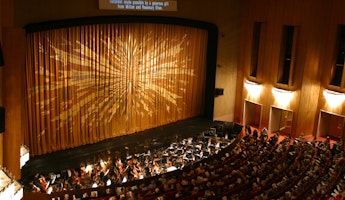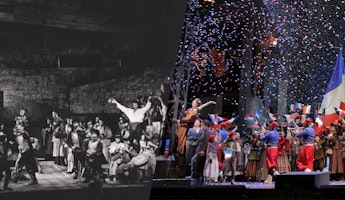Blog
November 2, 2023
Opera Buffa 101
If you’ve come to expect some dark themes in opera, you’re not alone. Betrayal, battles, and murder abound…and that’s just this season. So, it’s always a welcome respite when an opera like The Barber of Seville comes along. Rossini’s delightful romp belongs to the opera buffa genre, which simply means comic opera. In contrast to opera seria (serious operas), buffas feature lighthearted and zany plots, humorous characters, and happily-ever-afters. While they can touch on serious and complex themes like class struggles, they do so with a tongue-in-cheek manner that keeps the laughs coming. Popular among opera afficionados and particularly accessible for first-timers, buffas have quite a fascinating history.
Once upon a time (the 18th century), opera seria reigned supreme. You attended an opera house for tragedies or heroic tales, like Mozart’s The Clemency of Titus, created in honor of a new emperor’s coronation. Composers soon discovered that that audiences enjoyed a bit of silliness to lighten the atmosphere, and a single comic relief character wasn’t cutting it. So to satisfy the comedic itch, they whipped up short comedies to be performed during intermission, which were aptly called intermezzi. These intermezzi would grow so popular, especially among the working class, that they would start being performed on their own.
Where a typical opera seria had gods, heroes or royalty in the leading roles, with a stately libretto to match, intermezzi characters came from all backgrounds and sang in local dialects. Not only were they more understandable to the masses, but they were also more relatable.
One of the first intermezzi to be performed on its own (and still performed regularly today) was Giovanni Battista Pergolesi's 1733 La serva padrona, or The Maid Turned Mistress. It still serves as a blueprint for opera buffa: taking a scene from domestic life and adding exaggeratedly silly characters for hilarious results. The maid Serpina tricks her employer into asking for her hand, only for (spoiler alert) the two to realize that they’ve been in love the entire time. Compared to the epic battles of gods and kings in opera seria, having a working-class woman’s love life take center stage was a welcome bit of levity. Audiences ate it up.
The popularity of intermezzi would eventually lead composers based in Naples and Venice to produce full-fledged works, and opera buffa was born. Once audiences had more variety to pick from, opera skyrocketed among the working class.
Early opera buffas mostly focused on drawing laughs, though the genre was redefined with Mozart’s 1786 masterpiece The Marriage of Figaro. With aristocratic intrigue that wouldn’t seem out of place in an opera seria and pointed social commentary, Mozart proved that a comedy could have artistic merit beyond just drawing crowds. He and librettist Lorenzo Da Ponte also fleshed out their characters rather than relying on well-worn tropes, creating an opera that was as emotional as it was funny.
Figaro began the golden age of opera buffa, and the genre received another boost in 1816 with the character’s return in Rossini’s The Barber of Seville. Nonetheless, interest in opera buffa began to wane as the world was caught up in the new-fangled Romantic wave of the mid-19th century. The people wanted drama and emotion, not slapstick silliness. That’s not to say there weren’t any buffas of importance: The Elixir of Love, Don Pasquale, The Daughter of the Regiment and Falstaff are frequently performed to this day, but audience tastes were clearly changing.
The glory days for opera buffa may be long gone, but its impact and significance cannot be understated. There’ll always be room for comedy in the modern repertoire, and a good laugh is often just what we need in our lives. We invite you to see the appeal of opera buffas for yourself with our current production of The Barber of Seville.








/03-cosi/_dsc0996_pr.jpg?format=auto&fit=crop&w=345&h=200&auto=format)
















